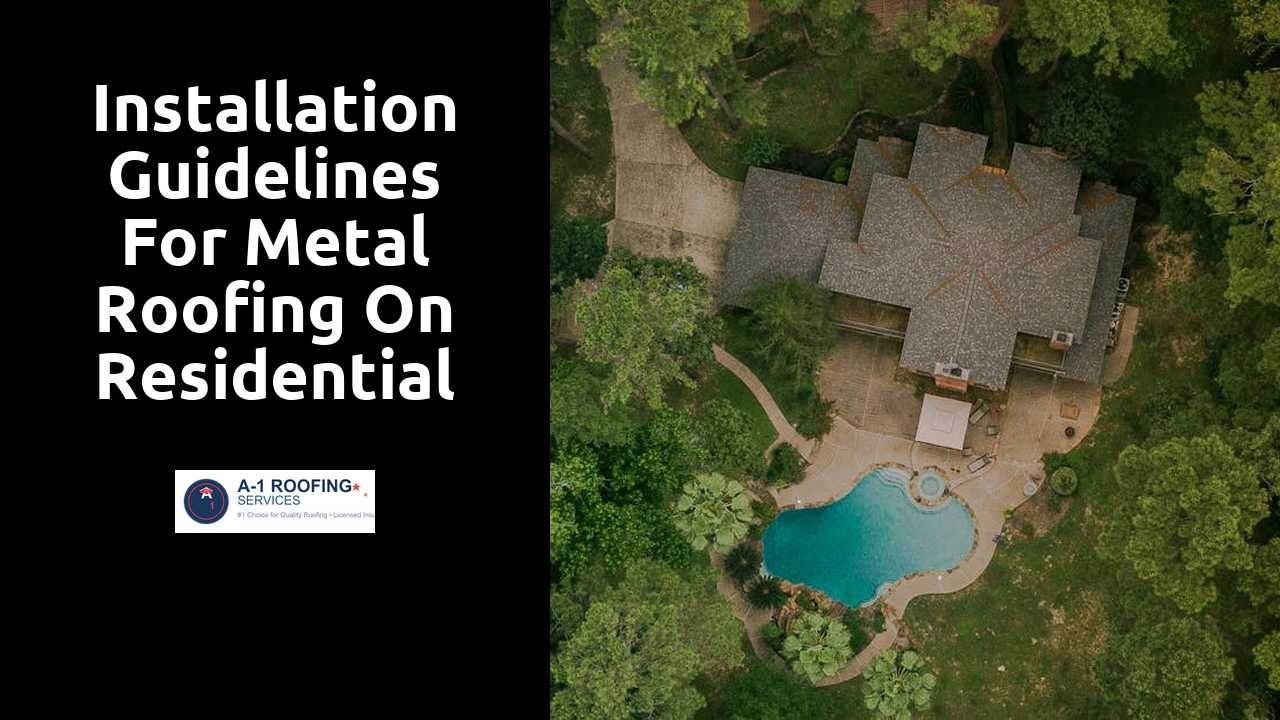
Installation Guidelines for Metal Roofing on Residential Structures
Table Of Contents
Roof Deck Preparation
A well-prepared roof deck is crucial for the durability and performance of a metal roofing system. Start by inspecting the existing roof deck for any signs of damage, such as rot or warping. Replace any compromised sections to ensure a solid and even surface. It is also important to ensure that the deck is clean and free from debris, as any obstructions can hinder proper installation.
In addition to surface repairs, check for proper ventilation within the attic space. Adequate airflow helps prevent moisture build-up, which can lead to structural issues over time. Use a level to verify that the roof deck is even, making any necessary adjustments before proceeding with roofing materials. Preparing the roof deck properly sets the foundation for a successful metal roofing installation.
Their blog is a great resource for information.
Ensuring a Stable Base
A stable base is crucial for the longevity and performance of a metal roofing system. Before installation begins, it is important to assess the roof deck for any damage or decay. Any compromised sections should be replaced or repaired to ensure a solid foundation. Additionally, the roof deck should be clean and free of debris to prevent moisture buildup, which can lead to issues down the line.
Proper ventilation plays a significant role in maintaining a stable base. Adequate airflow helps regulate temperature and moisture levels, reducing the risk of warping and corrosion over time. Installing insulation in conjunction with the roof deck can enhance energy efficiency while contributing to structural integrity. Take care to follow local building codes and manufacturer recommendations to ensure that the installation meets all necessary standards.
Installing Underlayment
Proper installation of underlayment is crucial for ensuring the longevity and effectiveness of the metal roofing system. This material acts as an additional barrier against moisture infiltration, providing extra protection during heavy rain or snow. It is essential to select a high-quality underlayment that can withstand the specific weather conditions of the area. Generally, synthetic or rubberized underlayments are recommended due to their durability and water-resistant properties.
Once the appropriate underlayment is selected, the next step is to lay it down correctly. Start at the eave and work upward towards the ridge, overlapping each row by at least six inches to create a watertight seal. Fastening the underlayment securely is important to avoid shifting in high winds. Adequate attention to detail during this step will help ensure that the subsequent installation of metal panels proceeds smoothly and efficiently.
Choosing the Right Underlayment
Selecting the appropriate underlayment is crucial for enhancing the performance and longevity of metal roofing systems. Options vary in material and properties, including synthetic, felt, and rubberized underlayments. Synthetic underlayment is known for its lightweight nature and high resistance to moisture, while felt underlayment, available in both 15 and 30-pound varieties, offers a more traditional choice with decent water resistance. Rubberized options provide excellent waterproofing capabilities, making them ideal for regions prone to heavy rain or snow.
The choice of underlayment should also correspond to the design of the roof and local climate conditions. In areas with extreme weather, a robust underlayment can protect the decking from damage resulting from ice dams or wind-driven rain. It is advisable to seek products that meet industry standards and offer warranties. Additionally, consulting local building codes can ensure compliance and provide guidance on the best materials for specific installations.
Securing Metal Panels
Properly securing metal panels is crucial for ensuring the longevity and performance of the roofing system. Each panel should be aligned according to the manufacturer’s specifications to maintain a tidy appearance and ensure proper water drainage. Begin fastening from the center of the panel and work towards the edges, using appropriate screws designed for metal roofs. This method not only provides a secure fit but also minimizes the risk of panel distortion or movement due to thermal expansion.
When choosing fastening techniques, consider the specific requirements of the metal panel system. Use high-quality screws with rubber washers to create a watertight seal at each fastener point. Space the fasteners according to the manufacturer's guidelines to prevent wind uplift and allow for expansion. Pay particular attention to ridges and valleys, where additional support may be necessary to withstand harsher weather conditions. Properly securing each panel minimizes the risk of leaks and enhances the overall durability of the roof.
Fastening Techniques and Recommendations
Proper fastening of metal roofing panels plays a critical role in ensuring their longevity and performance. Using the right fasteners is essential, as they provide the necessary grip and stability. Stainless steel or galvanized screws are typically recommended for their corrosion resistance. Each panel should be secured at every fastening point, particularly at high wind zones or areas prone to extreme weather conditions. The fasteners must penetrate the material underneath the metal panel, ideally reaching the underlying decking or supporting structure to minimize movement and potential leaks.
When installing the fasteners, it is important not to overtighten them, as this can distort the panel and create stress points. A good practice is to apply the fasteners in straight lines and to keep them consistent in spacing, which enhances the visual appeal while also contributing to the roof's structural integrity. Using a rubber washer with each screw will help create a watertight seal, further protecting the roof from water intrusion. Regular checks and maintenance of the fasteners can help identify any issues early, ensuring the roofing system remains secure over time.
Related Links
The Role of Metal Roofing in Enhancing Energy EfficiencyHow to Select the Right Gauge for Metal Roofing